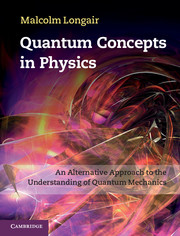Book contents
- Frontmatter
- Contents
- Preface
- Acknowledgements
- Part I The Discovery of Quanta
- Part II The Old Quantum Theory
- Part III The Discovery of Quantum Mechanics
- 10 The collapse of the old quantum theory and the seeds of its regeneration
- 11 The Heisenberg breakthrough
- 12 Matrix mechanics
- 13 Dirac's quantum mechanics
- 14 Schrödinger and wave mechanics
- 15 Reconcilingmatrix and wave mechanics
- 16 Spin and quantum statistics
- 17 The interpretation of quantum mechanics
- 18 The aftermath
- Epilogue
- Notes
- References
- Name index
- Subject index
13 - Dirac's quantum mechanics
from Part III - The Discovery of Quantum Mechanics
Published online by Cambridge University Press: 05 February 2013
- Frontmatter
- Contents
- Preface
- Acknowledgements
- Part I The Discovery of Quanta
- Part II The Old Quantum Theory
- Part III The Discovery of Quantum Mechanics
- 10 The collapse of the old quantum theory and the seeds of its regeneration
- 11 The Heisenberg breakthrough
- 12 Matrix mechanics
- 13 Dirac's quantum mechanics
- 14 Schrödinger and wave mechanics
- 15 Reconcilingmatrix and wave mechanics
- 16 Spin and quantum statistics
- 17 The interpretation of quantum mechanics
- 18 The aftermath
- Epilogue
- Notes
- References
- Name index
- Subject index
Summary
Göttingen and Copenhagen were the undoubted capitals of the new discipline of quantum mechanics. The expertise in experimental and mathematical physics and in pure mathematics made Göttingen the epicentre of the revolution which was taking place in the mathematical physics of quanta. Whilst this was to remain the case for the next few years, other actors soon appeared on the scene who were to contribute to Born's ‘tangle of interconnected alleys’. What was truly remarkable was how quickly the different approaches to the problems of quantum theory were developed and the rapid assimilation of all of them into a coherent and self-consistent theory of quantum mechanics. Whilst the theory itself was completed relatively quickly, the understanding of its physical content was to take many more years.
The new players on the scene included Paul Dirac at Cambridge, Erwin Schrödinger in Vienna and Norbert Wiener at the Massachusetts Institute of Technology. Each of them brought quite new approaches to the development of quantum theory – their innovations were to supersede the matrix mechanics of Born, Heisenberg and Jordan, but there can be no doubt that the success of that theory indicated clearly the route ahead. They were however to involve the introduction of new mathematical techniques into the description of quantum phenomena.
Dirac's approach to quantum mechanics
Paul Dirac was trained as an electrical engineer at Bristol University, but he had a very strong mathematical bent. He was a solitary character who was notoriously quiet and self-effacing. He simply worked things out on his own.
- Type
- Chapter
- Information
- Quantum Concepts in PhysicsAn Alternative Approach to the Understanding of Quantum Mechanics, pp. 247 - 260Publisher: Cambridge University PressPrint publication year: 2013



